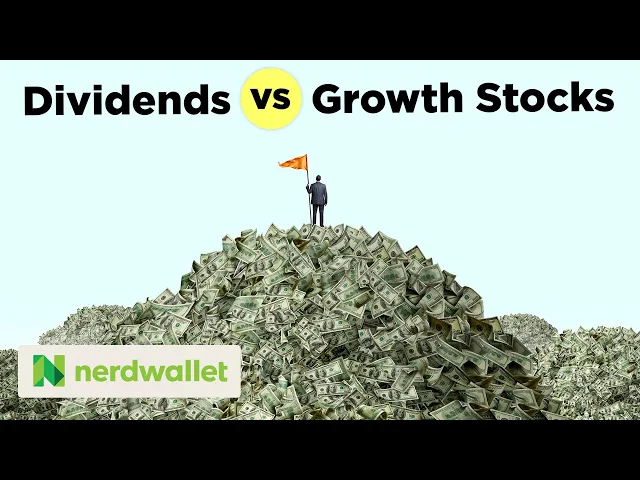Investing can be challenging, especially for investors who want to diversify their portfolios across multiple companies. Researching individual stocks can be time-consuming, which is why investing in exchange-traded funds (ETFs) can be a good alternative. ETFs are baskets of companies that are traded on stock exchanges and provide exposure to multiple stocks with just one purchase.
Here is a list of some of the best ETFs that hold large U.S.-based companies with expense ratios below 0.5%. These ETFs have been ordered based on their five-year performance. It is important to note that leveraged ETFs, inverse ETFs, and hedged ETFs are not included in this list.
It is important to consider the advantages and disadvantages of ETFs before investing. Some of the pros of investing in ETFs include diversification across industries, transparency in pricing, and tax benefits. On the other hand, some cons of ETFs include potential trading costs and liquidity issues, as well as the risk of an ETF closing.
Overall, ETFs can be a valuable investment tool for some investors, but it is essential to weigh the pros and cons before making investment decisions. It is also recommended to seek advice from a financial advisor to ensure that ETFs align with your investment goals and risk tolerance.
Navigating diversification in investment can be an arduous task, requiring thorough research and monitoring of numerous stocks. However, one innovative solution lies in exchange-traded funds (ETFs), which offer a convenient way to gain exposure to a diversified portfolio with a single purchase. This list showcases some of the best ETFs available in the market, providing an insightful look at their performance over the past five years.
ETFs come with a host of benefits, including the simplicity of use, cost-effectiveness, and seamless access to diversified assets. Diversification, in the ETF realm, extends beyond vertical markets to encompass diverse industries and sectors, enhancing portfolio stability amidst market volatility. Additionally, the transparency and tax advantages offered by ETFs make them a lucrative investment option, allowing investors to track price activity and optimize tax outcomes.
Despite their numerous advantages, ETFs do come with their own set of drawbacks. Factors such as trading costs, potential liquidity issues, and the risk of fund closure bring about certain challenges that investors should be mindful of before delving into ETF investments. Understanding both the pros and cons of ETFs can help investors make informed decisions and navigate the complexities of the investment landscape with greater clarity and confidence.
As we look ahead to the investment landscape for March 2024, Exchange-Traded Funds (ETFs) continue to be a popular choice for investors seeking diversified exposure to various asset classes. ETFs offer a convenient way to gain access to a wide range of securities in a single investment, making them ideal for both novice and experienced investors alike. With a plethora of options available in the market, it can be challenging to determine which ETFs are the best fit for your investment goals. In this article, we will highlight the 5 best ETFs for March 2024, based on their performance, expense ratios, and underlying holdings.
1. Vanguard Total Stock Market ETF (VTI)
The Vanguard Total Stock Market ETF (VTI) is a top choice for long-term investors looking for broad exposure to the U.S. stock market. This ETF tracks the performance of the CRSP US Total Market Index, which includes large-, mid-, small-, and micro-cap stocks. With over 3,600 holdings, VTI provides investors with diversified exposure to the entire U.S. equities market. Additionally, VTI boasts a low expense ratio of just 0.03%, making it one of the most cost-effective options in its category.
2. iShares Core S&P 500 ETF (IVV)
The iShares Core S&P 500 ETF (IVV) is another excellent choice for investors seeking exposure to large-cap U.S. stocks. IVV tracks the performance of the S&P 500 Index, which includes 500 of the largest publicly traded companies in the United States. With top holdings in companies such as Apple, Microsoft, Amazon, and Facebook, IVV offers investors broad exposure to some of the most well-known and established companies in the market. IVV also boasts a low expense ratio of just 0.04%, making it an attractive option for cost-conscious investors.
3. Invesco QQQ Trust (QQQ)
For investors looking for exposure to the tech sector, the Invesco QQQ Trust (QQQ) is an excellent choice. QQQ tracks the performance of the Nasdaq-100 Index, which includes 100 of the largest non-financial companies listed on the Nasdaq Stock Market. With top holdings in tech giants such as Apple, Microsoft, Amazon, and Alphabet, QQQ offers investors exposure to some of the most innovative and fast-growing companies in the market. While QQQ has a slightly higher expense ratio of 0.20%, its strong performance and growth potential make it a compelling option for tech-focused investors.
4. SPDR Gold Shares (GLD)
For investors looking to diversify their portfolio with exposure to precious metals, the SPDR Gold Shares (GLD) ETF is a top choice. GLD tracks the performance of the price of gold bullion, providing investors with a convenient way to gain exposure to the precious metal. With gold serving as a safe-haven asset during times of market volatility, GLD can help investors protect their portfolio against economic uncertainty. While GLD has a slightly higher expense ratio of 0.40%, its performance as a hedge against inflation and market downturns makes it a valuable addition to any diversified portfolio.
5. Vanguard FTSE Emerging Markets ETF (VWO)
For investors looking to diversify their portfolio with exposure to emerging markets, the Vanguard FTSE Emerging Markets ETF (VWO) is an excellent choice. VWO tracks the performance of the FTSE Emerging Markets All Cap China A Inclusion Index, which includes large-, mid-, and small-cap stocks of companies based in emerging markets. With top holdings in companies such as Tencent, Alibaba, and Samsung, VWO offers investors exposure to some of the fastest-growing economies in the world. Despite the inherent risks of investing in emerging markets, VWO has a low expense ratio of just 0.10%, making it an attractive option for investors seeking growth opportunities outside of the U.S.
In conclusion, the 5 best ETFs for March 2024 offer investors a range of options for achieving their investment goals. Whether you’re looking for broad exposure to the U.S. stock market, tech sector, precious metals, or emerging markets, these ETFs provide convenient and cost-effective ways to gain diversified exposure to various asset classes. By carefully considering your investment objectives, risk tolerance, and time horizon, you can select the ETFs that best align with your financial goals and create a well-balanced and diversified investment portfolio for the future.


